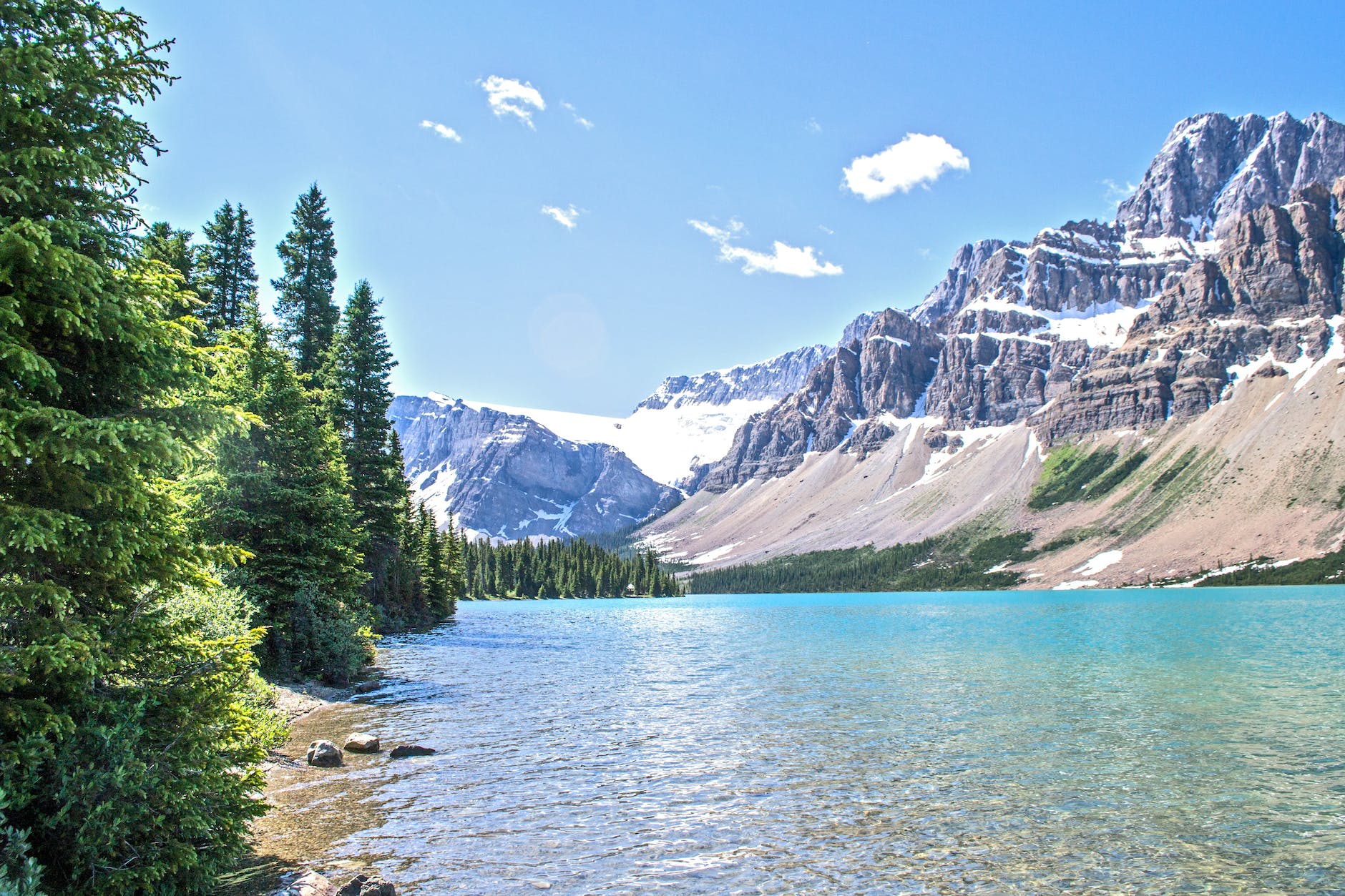Environmental insurance can be a complex topic, often raising numerous questions for both individuals and businesses alike. In this article, we aim to provide clarity and answers to some of the most frequently asked questions about environmental insurance. Whether you are seeking to understand the coverage it offers, the types of risks it mitigates, or the industries that typically require this specialized insurance, this comprehensive guide will equip you with the knowledge you need to make informed decisions regarding your environmental protection needs. So, let’s explore the world of environmental insurance and shed light on its importance and relevance in today’s environmentally conscious society.
Understanding the Basics of Environmental Insurance
Definition of Environmental Insurance
Environmental insurance is a specialized form of insurance coverage that provides financial protection for companies and individuals against costs associated with environmental liabilities. It is designed to address the damages caused by pollution incidents, remediation of contaminated sites, and legal expenses arising from environmental claims. This type of insurance is essential for businesses involved in activities that carry a potential risk of environmental damage.
Different Types of Environmental Insurance
There are various types of environmental insurance available, each designed to address specific risks and requirements. Some common types include:
-
Pollution Liability Insurance: This type of insurance covers the costs associated with pollution incidents, including the cleanup and restoration of contaminated sites, as well as any resulting legal expenses.
-
Contractors’ Pollution Liability Insurance: Contractors who work on projects that involve potential environmental risks, such as construction or remediation projects, can obtain this coverage to protect against claims related to pollution incidents caused by their activities.
-
Premises Pollution Liability Insurance: This coverage is essential for businesses that own or lease property, as it provides protection against claims related to pollution incidents that occur on their premises.
-
Environmental Impairment Liability Insurance: This type of insurance offers comprehensive coverage for various environmental liabilities, including pollution incidents, third-party claims, and damage to natural resources.
Why is Environmental Insurance Needed
Environmental insurance is necessary for several reasons. First and foremost, it protects businesses and individuals from the potentially significant financial costs associated with environmental liabilities. These liabilities can arise from pollution incidents, fines and penalties imposed by regulatory authorities, and legal expenses related to environmental claims.
Additionally, environmental insurance provides peace of mind and ensures that businesses can continue their operations without the constant fear of facing a catastrophic financial loss due to an environmental incident. It also demonstrates a commitment to environmental responsibility, which can enhance a company’s reputation and help attract environmentally-conscious clients and investors.
Scope of Environmental Insurance
What Does Environmental Insurance Cover?
Environmental insurance covers a wide range of risks and liabilities related to environmental damage. Some common coverage areas include:
-
Pollution Cleanup and Remediation: This coverage reimburses the costs incurred in cleaning up and remediating pollution incidents, including the removal and disposal of hazardous substances.
-
Third-Party Liability: Environmental insurance provides coverage for legal expenses and damages awarded in lawsuits filed by third parties who suffer harm as a result of pollution incidents involving the insured.
-
Business Interruption: In the event of a pollution incident that forces a business to temporarily suspend its operations, environmental insurance can provide coverage for lost income and ongoing expenses.
-
Legal Defense Costs: Environmental insurance covers the costs associated with hiring legal counsel to defend against environmental claims and lawsuits.
Potential Exclusions in Environmental Insurance
While environmental insurance offers comprehensive coverage, there are some common exclusions to be aware of. These may include:
-
Known Pollution Conditions: Environmental insurance generally does not cover pollution conditions that were known to the insured before securing the policy.
-
Intentional Acts: Coverage may be excluded for damages caused intentionally or knowingly by the insured.
-
Regulatory Fines and Penalties: Environmental insurance typically does not cover fines and penalties imposed by regulatory authorities for non-compliance with environmental laws and regulations.
-
Known Pollutants: Some policies may exclude coverage for pollution incidents caused by certain substances that are known to be hazardous or regulated.
Advantages of Comprehensive Coverage
Choosing a comprehensive environmental insurance policy offers several advantages. Firstly, it provides peace of mind knowing that a wide range of environmental risks and liabilities are covered. This comprehensive coverage reduces the financial burden and uncertainty associated with potential environmental damages and claims.
Comprehensive environmental insurance also enhances a company’s reputation and credibility, demonstrating a commitment to environmental responsibility. This can be particularly beneficial for businesses operating in industries with high environmental risks or those seeking to attract environmentally-conscious clients and investors.
Cost of Environmental Insurance
Factors that Influence the Cost
Several factors influence the cost of environmental insurance. These factors include:
-
Nature of the Business: The type of industry and the level of environmental risks associated with the business operations play a significant role in determining the cost of environmental insurance. Industries with a higher potential for environmental damage, such as manufacturing or waste management, generally face higher premiums.
-
Past Claims History: Insurers consider the insured’s past claims history, including any previous pollution incidents or environmental claims, when assessing the cost of environmental insurance. A poor claims history may result in higher premiums.
-
Coverage Limits: The amount of coverage required by the insured also affects the cost of environmental insurance. Higher coverage limits result in higher premiums.
-
Risk Management Practices: Insurers assess an insured’s risk management practices, including pollution prevention measures and compliance with environmental regulations. Businesses with robust risk management practices may qualify for premium discounts.
Average Cost of Environmental Insurance
The cost of environmental insurance can vary significantly based on the factors mentioned above. On average, businesses can expect to pay between $2,000 and $10,000 per year for environmental insurance coverage. However, this cost can be higher for high-risk industries or businesses with substantial potential liabilities.
It is important to note that the specific cost of environmental insurance will vary depending on the individual circumstances of each business, including its size, location, and risk profile.
Ways to Lower the Cost
While the cost of environmental insurance can be significant, there are several strategies businesses can employ to lower their premiums:
-
Risk Mitigation Measures: Implementing effective risk management practices, such as pollution prevention measures and regular compliance audits, can help reduce the likelihood of pollution incidents and demonstrate to insurers that the business is taking proactive steps to mitigate risks.
-
Choosing Deductibles Wisely: Opting for a higher deductible can result in lower premiums. However, businesses should carefully evaluate their ability to cover the deductible amount in the event of a claim.
-
Bundling Policies: Some insurers offer discounts when businesses bundle multiple insurance policies together. Consider combining environmental insurance with other business insurance policies, such as general liability, to potentially reduce overall insurance costs.
-
Working with an Insurance Broker: An insurance broker specializing in environmental insurance can help businesses navigate the market, compare quotes from different insurers, and negotiate lower premiums.
Who Needs Environmental Insurance
Companies and Industries That Require Environmental Insurance
Environmental insurance is essential for companies operating in various industries that carry potential environmental risks. Some industries that typically require environmental insurance include:
-
Manufacturing: Manufacturers often handle and store hazardous materials that can cause pollution incidents. Environmental insurance provides protection against risks associated with manufacturing operations.
-
Construction: Construction companies that work on projects involving potential environmental hazards, such as soil excavation or demolition near contaminated sites, should consider obtaining environmental insurance to protect against associated liabilities.
-
Waste Management: Businesses involved in waste management, including landfill operators and recycling facilities, face inherent environmental risks. Environmental insurance is crucial to cover potential pollution incidents and third-party liability claims.
-
Oil and Gas: The oil and gas industry is known for its environmental risks, including the potential for oil spills and groundwater contamination. Environmental insurance is necessary to protect against these risks.
Situations Where Environmental Insurance is Essential
While certain industries have a higher need for environmental insurance, there are also specific situations where it becomes essential regardless of the industry. These include:
-
Mergers and Acquisitions: When acquiring or merging with a company, it is crucial to assess the potential environmental liabilities associated with the target business. Environmental insurance can provide protection against unexpected liabilities.
-
Property Transactions: Environmental due diligence is a critical component of property transactions. Environmental insurance can cover any undisclosed environmental liabilities that may arise after the transaction, providing financial protection to the buyer.
-
Government Contracts: Many government contracts require businesses to carry environmental insurance to ensure they are adequately protected against potential environmental liabilities during project execution.
-
Professional Services: Professionals providing environmental consulting or remediation services may need environmental insurance to protect against claims arising from their professional activities.
Process of Obtaining Environmental Insurance
Requirements for Getting Environmental Insurance
To obtain environmental insurance, businesses must typically provide certain documentation and meet specific requirements. These may include:
-
Risk Assessment: Insurers will assess the environmental risks associated with the business’s operations and the potential liabilities it may face. Businesses may need to provide documents such as environmental impact assessments, permits, and compliance records.
-
Loss History: Insurers will review the business’s past claims history, including any pollution incidents or environmental claims, to assess the level of risk and potential liabilities.
-
Risk Management Practices: Insurers will evaluate the risk management practices in place, such as pollution prevention measures, employee training, and compliance with environmental regulations.
-
Financial Information: Businesses may need to provide financial information, including revenue and profit figures, to determine the appropriate coverage limits and premiums.
How to Apply for Environmental Insurance
To apply for environmental insurance, businesses typically need to follow these steps:
-
Identify Insurance Needs: Determine the specific environmental risks and liabilities associated with the business operations and the desired coverage limits.
-
Gather Documentation: Collect all necessary documentation, including risk assessment reports, compliance records, and financial information.
-
Research Insurers: Research different insurance providers specializing in environmental insurance and assess their reputation, financial stability, and coverage options.
-
Request Quotes: Contact selected insurers and request quotes for environmental insurance coverage based on the identified needs and provided documentation.
-
Compare Quotes: Compare the quotes received, considering coverage, limits, deductibles, and premiums.
-
Select an Insurer: Choose the insurer that best meets the business’s needs and provides comprehensive coverage at a competitive price.
-
Complete Application: Fill out the application form provided by the chosen insurer, providing all required information and documentation.
-
Underwriting and Approval: The insurer will review the application, assess the risk profile, and underwrite the policy based on the provided information. Once approved, the policy will be issued.
Estimated Time to Get the Insurance
The time it takes to obtain environmental insurance can vary depending on several factors, including the complexity of the risks involved, the availability of required documentation, and the responsiveness of the insurer. On average, the underwriting process for environmental insurance can take anywhere from a few days to several weeks. However, it is essential to start the process well in advance to ensure coverage is in place when needed.
Claims Process in Environmental Insurance
Steps Involved in Filing a Claim
Filing a claim under environmental insurance typically involves the following steps:
-
Notify the Insurer: Promptly notify the insurer of any pollution incident or potential environmental claim. Provide detailed information about the incident, including the date, location, and a description of the damages or liabilities.
-
Document the Incident: Document the incident by taking photographs, collecting samples, and keeping records of any relevant communication or documentation related to the incident.
-
Seek Expert Advice: Consult environmental experts, if necessary, to assess the extent of the damages and the appropriate actions to be taken.
-
Submit the Claim: Complete the necessary claim forms provided by the insurer, providing all requested information and documentation to support the claim.
-
Cooperate with the Insurer: Cooperate fully with the insurer throughout the claims process, providing any additional information or documentation as requested.
-
Claims Investigation: The insurer will investigate the claim, including assessing the damages, reviewing the policy coverage, and determining the liability. This may involve site inspections, interviews, and consultation with third-party experts.
-
Claims Settlement: Once the investigation is complete, the insurer will determine the amount of the claim that is covered by the policy and provide a settlement offer. The insured can negotiate the settlement if necessary.
-
Claim Resolution: If the insured agrees to the settlement offer, the claim is resolved, and the insurer will disburse the agreed amount. If there is disagreement, the insured may seek alternative dispute resolution or pursue legal action.
Time Frame for Settling a Claim
The time frame for settling a claim under environmental insurance will depend on various factors, including the complexity of the claim, the availability of information and documentation, and the cooperation of all parties involved. In general, the claims process can take anywhere from a few weeks to several months. It is essential for the insured to proactively collaborate with the insurer to ensure a timely resolution.
Role of the Adjuster in the Claims Process
In the claims process for environmental insurance, the adjuster plays a crucial role in assessing the claim, determining coverage, and facilitating the resolution. The adjuster is responsible for:
-
Investigating the Claim: The adjuster will conduct a thorough investigation of the claim, which may involve site inspections, document review, and consultation with experts.
-
Assessing Damages and Coverage: The adjuster will evaluate the damages caused by the pollution incident and assess the coverage provided by the insurance policy.
-
Negotiating the Settlement: The adjuster will work with the insured to negotiate a fair settlement based on the policy terms, the extent of the damages, and the available coverage.
-
Facilitating Communication: The adjuster acts as a liaison between the insured and the insurer, facilitating communication and ensuring a smooth claims process.
-
Resolving Disputes: If there is any disagreement regarding the claim, the adjuster may facilitate alternative dispute resolution or coordinate with legal counsel if legal action is required.
Legal Aspects of Environmental Insurance
Liability Law and Environmental Insurance
Environmental insurance operates within the framework of liability laws that govern responsibility for environmental damages and pollution incidents. Liability laws can vary by jurisdiction, but they generally establish the principle that parties responsible for causing pollution should bear the costs associated with remediation and damages.
Environmental insurance helps businesses navigate these liability laws by providing coverage for potential claims and legal expenses. It ensures that businesses can meet their financial obligations and mitigate the legal risks associated with environmental liabilities.
Enforcement of Environmental Insurance Policies
Environmental insurance policies are legally binding contracts between the insured and the insurer. If an insured party fails to comply with the policy terms, the insurer may take legal action to enforce the contract.
Similarly, if the insurer fails to fulfill its obligations under the policy, the insured may have legal recourse to seek enforcement of the coverage. It is important for both parties to fulfill their obligations and adhere to the terms of the policy to ensure a smooth claims process and avoid legal disputes.
Legalities around Denial of Claims
Insurance companies may deny environmental insurance claims if they determine that the claim falls outside the policy coverage or does not meet the requirements for a valid claim. However, there are legal remedies available to insured parties who believe their claims have been wrongfully denied.
If a claim is denied, the insured can seek clarification from the insurer on the reasons for denial. If the denial is based on incorrect or unreasonable grounds, the insured may pursue legal action to enforce the coverage and seek damages.
It is crucial for insured parties to review their policies carefully, understand the coverage limitations and exclusions, and seek legal advice if necessary to navigate the process of filing a claim or disputing a denial.
Caveats and Misunderstandings
Common Misconceptions about Environmental Insurance
There are certain common misconceptions about environmental insurance that should be clarified:
-
General Liability Coverage is Sufficient: Many businesses mistakenly believe that their general liability insurance policy will cover pollution incidents. However, general liability policies usually exclude pollution-related claims, making specific environmental insurance necessary.
-
All Environmental Risks are Covered: While environmental insurance provides comprehensive coverage for many risks, there may still be certain exclusions and limitations based on the policy terms. It is important to carefully review the policy and understand the coverage provided.
-
The Government Will Cover Environmental Liabilities: Some businesses assume that the government will bear the costs associated with environmental liabilities. However, unless it is a government-mandated cleanup, businesses are generally responsible for the costs involved.
Limitations of Environmental Insurance
It is important to understand the limitations of environmental insurance to avoid any misunderstandings. Some limitations include:
-
Known Conditions: Environmental insurance usually does not cover pollution conditions that were known to the insured before securing the policy. It is crucial to disclose any known conditions during the underwriting process.
-
Penalty and Fines: Environmental insurance typically does not cover fines and penalties imposed by regulatory authorities for non-compliance with environmental laws and regulations.
-
Gradual Pollution: Some policies may exclude coverage for pollution incidents that occur gradually over time rather than as a sudden event.
Reading the Fine Print
To fully understand the coverage provided by an environmental insurance policy, it is crucial to read the fine print and review the terms and conditions carefully. Paying close attention to the details and asking the insurer for clarification on any unclear or ambiguous clauses is essential.
Reviewing the policy with legal counsel or an insurance professional specializing in environmental insurance can help ensure a thorough understanding of the coverage, exclusions, and limitations. It is important to be proactive in seeking clarification to avoid any surprises during the claims process.
Environmental Insurance Providers
Choosing an Environmental Insurance Provider
Selecting the right environmental insurance provider is crucial to ensure reliable coverage and exceptional service. Here are some factors to consider when choosing a provider:
-
Specialization: Look for insurers specializing in environmental insurance as they will have the expertise and experience to address the unique risks and liabilities associated with environmental damage.
-
Financial Stability: Assess the financial stability of the insurance provider by reviewing their financial ratings from independent rating agencies. A financially stable insurer can provide confidence that they will be able to honor policy commitments.
-
Claims Handling Process: Understand the insurer’s claims handling process and assess their reputation for timely claim resolution and excellent customer service. Look for an insurer with a track record of fair and efficient claims settlement.
-
Coverage Options: Consider the coverage options offered by the insurance provider and ensure they align with the specific needs and risks of the business. Customizable coverage options provide flexibility to tailor the policy to individual requirements.
-
Risk Management Support: Evaluate whether the insurer offers risk management support, including tools, resources, and guidance to help businesses mitigate environmental risks and prevent pollution incidents.
Reviews and Ratings
Reading reviews and ratings of environmental insurance providers can provide valuable insights into their reputation, customer satisfaction, and claims handling efficiency. Online review platforms, industry forums, and professional networks are good sources of customer feedback and experiences.
Additionally, consult with peers and industry associations to gather recommendations and insights into reputable environmental insurance providers. Consider reaching out to businesses operating in similar industries to learn about their experiences with different insurance companies.
Comparison of Top Providers
There are several prominent environmental insurance providers in the market. It is important to compare their offerings, coverage terms, and pricing to make an informed decision. Here are three top providers to consider:
-
Company A: Known for its comprehensive coverage options, competitive pricing, and efficient claims handling process, Company A has established a strong reputation in the environmental insurance sector.
-
Company B: With a specialization in high-risk industries, Company B offers tailored coverage options and risk management support. Their focus on customer satisfaction makes them a preferred choice for businesses facing unique environmental risks.
-
Company C: Recognized for its financial stability and customizable policies, Company C provides extensive coverage options and broad risk management resources. Their claims settlement process is known for its fairness and efficiency.
Comparing the offerings of these providers and considering their reputation, service quality, and pricing will assist businesses in selecting the most suitable environmental insurance provider for their needs.
Future of Environmental Insurance
Trends in Environmental Insurance
Environmental insurance is evolving to address emerging risks and changing market conditions. Some key trends in environmental insurance include:
-
Increasing Demand: As environmental awareness and regulations continue to evolve, the demand for environmental insurance is expected to rise. Businesses are becoming more proactive in protecting themselves and the environment from potential risks.
-
Climate Change Focus: Insurers are adapting their policies to reflect the increasing risks associated with climate change. Enhanced coverage for natural catastrophes, such as flooding and wildfires, is becoming more prominent.
-
Expansion of Coverage: Environmental insurance coverage is expanding to include emerging risks, such as cyber liability related to environmental incidents and nanotechnology-related risks.
-
Risk Assessment Tools: Advanced technologies, such as remote sensing and data analytics, are being integrated into risk assessment processes. This enables insurers to assess environmental risks more accurately and tailor coverage accordingly.
Impact of Climate Change on Environmental Insurance
Climate change is expected to have a significant impact on environmental insurance. Rising sea levels, increased frequency of extreme weather events, and changing rainfall patterns pose new challenges for insurers and insured parties alike.
The increased risk of natural catastrophes, such as hurricanes and floods, will lead to a greater demand for coverage against these perils. Insurers will need to assess new risks associated with climate change and adjust their policies accordingly to provide adequate coverage.
Furthermore, the emphasis on sustainability and environmental responsibility is likely to drive changes in underwriting practices, premium calculations, and risk assessment methodologies. Insurers may incentivize environmentally-friendly practices by offering lower premiums to businesses that actively mitigate their environmental impacts.
Innovation and Evolution in the Sector
The environmental insurance sector is poised for continued innovation and evolution. Insurers are leveraging technology, data analytics, and advanced risk assessment models to enhance their underwriting processes and provide more tailored coverage options.
Insurtech companies are also emerging in the environmental insurance space, utilizing technologies such as drone inspections, connected devices, and artificial intelligence to streamline processes and improve risk management.
Furthermore, collaborations between insurers, regulators, and businesses are driving the development of new risk mitigation strategies and industry-wide standards for environmental performance. These initiatives aim to foster sustainable practices and facilitate the long-term viability of the insurance sector in addressing environmental risks.
In conclusion, environmental insurance plays a crucial role in protecting businesses and individuals from the potentially devastating financial consequences of environmental liabilities. Understanding the basics of environmental insurance, including the different types of coverage, cost factors, and the claims process, is essential for businesses operating in industries with potential environmental risks. By selecting the right environmental insurance provider and staying informed about emerging trends and innovations in the sector, businesses can ensure comprehensive coverage and effective risk management in an evolving environmental landscape.



